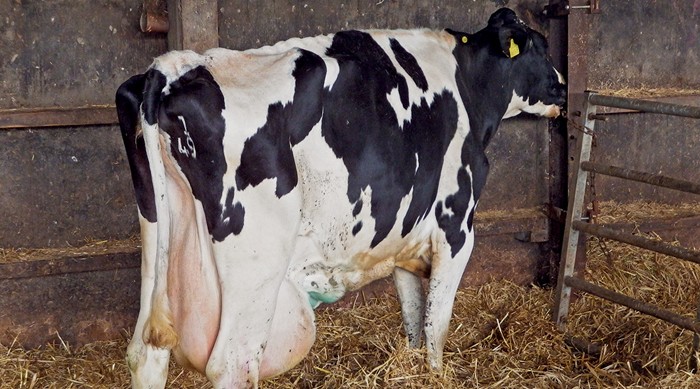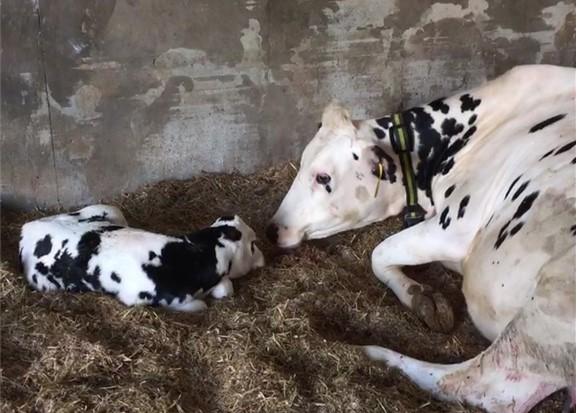Most cattle farmers know that managing ketosis in their herd is crucial for maintaining optimal cattle health. Ketosis is a metabolic disorder that can have serious implications if not properly addressed. In this comprehensive guide, we will investigate into the causes of ketosis in cattle, how to identify early symptoms, and most importantly, expert strategies for preventing and managing ketosis to ensure the well-being and productivity of your cattle. Whether you are a seasoned farmer or just starting out, understanding how to effectively manage ketosis in cattle is vital for the success of your operation.
Key Takeaways:
- Monitor Nutrition: Properly balance the diet of cattle to prevent ketosis, ensuring they receive enough carbohydrates and protein.
- Regular Monitoring: Continuously check the body condition score and weight to catch early signs of ketosis, allowing for prompt intervention.
- Implement Prevention Strategies: Utilize strategies such as gradual diet changes, adequate feeding frequency, and proper transition management to reduce the risk of ketosis in cattle.

Symptoms:
Here are some symptoms shared by cattles:
- Reduced milk yield – Cows with ketosis often produce significantly less milk than usual, as the condition affects their metabolism and energy levels.
- Weight loss – Due to the lack of glucose and energy, the cow’s body starts using fat reserves, leading to rapid and noticeable weight loss.
- Reduced appetite – Cows may show less interest in eating, which further exacerbates the energy deficit, making ketosis worse.
- Dull coat – The cow’s coat may lose its usual shine and become rough or lackluster, indicating poor health and nutritional imbalance.
- Acetone breath – A sweet or “pear drop” smell can be detected in the cow’s breath or milk due to the breakdown of fat and the production of ketones, which is a hallmark of ketosis.
- Fever – In some cases, the cow may develop a mild fever, as ketosis often accompanies other metabolic disorders that can affect the immune response.
- Nervous signs – Cows may display unusual behaviors such as restlessness, head pressing, or agitation due to the impact of ketone bodies on the brain and nervous system.
- Excess salivation – Increased salivation, drooling, or frothy saliva can be seen, as ketosis affects the normal digestive and nervous processes.
- Licking – Compulsive or repetitive licking of objects or themselves is another nervous symptom that may arise in cattle affected by ketosis.
- Aggression – Some cows become irritable or show unusual aggression, likely due to the nervous system being affected by the ketone imbalance.
Recognizing these various symptoms of ketosis is crucial for maintaining the health and productivity of cattle. By being vigilant and proactive in spotting these signs early, cattle producers can effectively manage ketosis and promote optimal cattle well-being.
Nutritional Strategies for Prevention
Diet Optimization
Some of the most important aspects of managing ketosis in cattle involve diet optimization. An appropriate balance of energy, protein, and fiber in the diet can help prevent excessive fat mobilization and the resulting ketosis. Ensuring that cattle have access to high-quality forage and balanced concentrate feeds is crucial in maintaining optimal cattle health and preventing metabolic disorders.
Supplementation and Feed Additives
An necessary component of managing ketosis in cattle is the strategic use of supplementation and feed additives. Nutritional supplements such as rumen-protected choline and propylene glycol can help support liver function and prevent excessive ketone production. Feed additives like yeast cultures and buffering agents can also aid in maintaining a healthy rumen environment and supporting optimal digestion.
Monitoring and Diagnostic Tools
Ketone Body Testing
Tools for ketone body testing are necessary in managing ketosis in cattle. These tools help in early detection and monitoring of ketosis, allowing for prompt intervention to maintain optimal cattle health. Urine ketone test strips, blood ketone meters, and rumen fluid pH tests are commonly used for ketone body testing. Regular testing using these tools provides valuable insight into the metabolic status of the cattle, enabling timely adjustments to their nutrition and management practices.
Technological Advances in Health Monitoring
Ketosis can be effectively managed with the help of technological advances in health monitoring. Remote monitoring systems, such as wearable devices and sensors, are revolutionizing the way cattle health is monitored. These technologies allow for continuous tracking of vital parameters like activity levels, rumination patterns, and body temperature. By harnessing real-time data provided by these advanced tools, farmers can identify early signs of health issues, including ketosis, and take proactive measures to mitigate them.
Technological advances in health monitoring enable farmers to proactively manage ketosis in cattle by providing valuable insights into their health status. By leveraging innovative tools such as wearable devices and sensors, farmers can closely monitor key physiological parameters and detect any deviations from normal values. This allows for early intervention and targeted management strategies to maintain optimal cattle health and productivity.
Intervention and Treatment Methods
Veterinary Medical Treatments
Medical intervention plays a crucial role in managing ketosis in cattle. When symptoms of ketosis are detected, it is important to consult a veterinarian for a proper diagnosis and development of a treatment plan. Veterinary medical treatments may include the administration of glucose solutions, intravenous fluids, and oral propylene glycol to help the affected cattle recover and regain their health.
1. Intravenous Glucose Therapy
- Description: The most immediate treatment for ketosis is administering 500 mL of a 50% dextrose solution via IV to quickly restore glucose levels in the cow.
- Effect: This provides a quick energy source and helps the cow recover from hypoglycemia.
2. Propylene Glycol Drench
- Description: Oral administration of propylene glycol (300g/day for 3–5 days) is a common method to provide a rapidly available glucose precursor.
- Effect: It helps boost blood glucose levels and provides an alternative energy source by increasing the production of glucose in the liver.
3. Corticosteroids (e.g., Dexamethasone)
- Description: Injecting corticosteroids stimulates gluconeogenesis (glucose production from non-carbohydrate sources) and helps the cow mobilize fat stores more effectively.
- Effect: It reduces the breakdown of fat, which in turn decreases the production of ketones.
4. Vitamin B12 and Niacin Supplementation
- Description: Administering Vitamin B12 and niacin supports energy metabolism in cows, helping improve their energy balance.
- Effect: These supplements enhance the cow’s ability to utilize glucose and fatty acids.
5. Glucocorticoid Injections
- Description: Glucocorticoids like prednisolone are sometimes used to stimulate the liver’s production of glucose and reduce ketone production.
- Effect: This helps to control fat metabolism and reduce ketone levels in the bloodstream.
6. Feed Adjustment
- Description: High-energy feeds, like molasses or grains, can be added to the diet to help cows recover and provide them with an additional source of energy.
- Effect: Proper nutrition balances the cow’s energy needs, reducing fat mobilization and lowering the risk of ketosis.
Maintaining Long-Term Cattle Health
Developing a Ketosis Management Plan
To effectively manage ketosis in cattle and maintain optimal health, it is imperative to develop a comprehensive ketosis management plan. The plan should include strategies for proper nutrition, monitoring ketone levels, early detection of ketosis symptoms, and intervention protocols to address any signs of ketosis promptly.
Regular Health Check-Ups and Record Keeping
Regular health check-ups and diligent record-keeping are crucial components of maintaining long-term cattle health. By scheduling routine veterinary visits and keeping detailed records of each animal’s health history, ketone levels, and nutritional intake, you can proactively identify any potential issues and take appropriate actions to prevent ketosis and other health concerns.
Check-ups should include physical examinations, blood tests to monitor ketone levels, and discussions with your veterinarian about any observed changes in behavior or appetite. Keeping meticulous records will help track the effectiveness of your ketosis management plan and make informed decisions about adjustments if needed.
Conclusion

Ultimately, managing ketosis in cattle is crucial for maintaining optimal cattle health and ensuring high productivity in your herd. By following the expert tips and guidelines provided in this how-to guide, you can effectively prevent, detect, and treat ketosis in your cattle. Maintaining a balanced diet, proper nutrition, and regular monitoring are key components of managing ketosis. Remember to consult with your veterinarian for any specific concerns or questions regarding the health of your cattle. With proper care and attention, you can keep your cattle healthy and thriving.
FAQ
Q: What is ketosis in cattle?
A: Ketosis in cattle is a metabolic disorder that occurs when there is an excessive accumulation of ketone bodies in the blood. It is most commonly seen in high-producing dairy cows and can lead to serious health issues if not managed properly.
Q: What are the symptoms of ketosis in cattle?
A: The symptoms of ketosis in cattle include decreased milk production, weight loss, poor appetite, lethargy, and a sweet or fruity smell to the breath. In severe cases, cows may also exhibit nervous system signs such as head pressing, circling, or licking and chewing.
Q: How can I manage ketosis in cattle?
A: To manage ketosis in cattle, it is important to provide a balanced diet with adequate energy levels, avoid sudden changes in feed, and ensure cows have access to clean water at all times. Regular monitoring of body condition, milk production, and ketone levels can help detect ketosis early and allow for prompt intervention.










